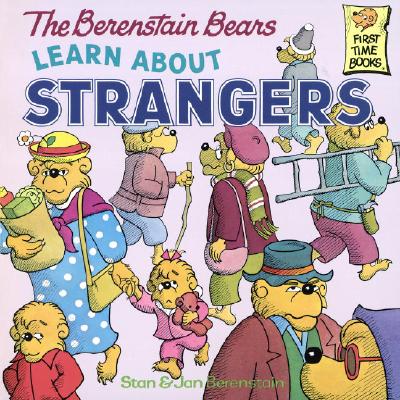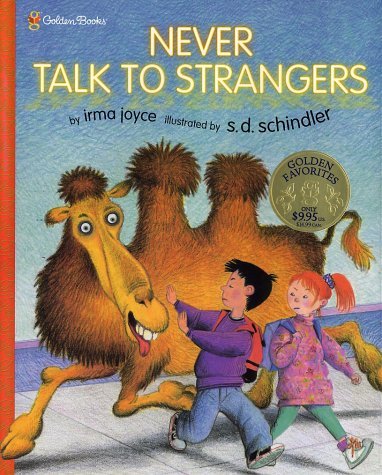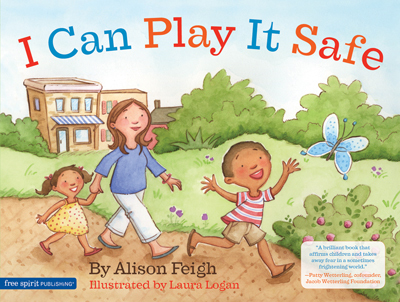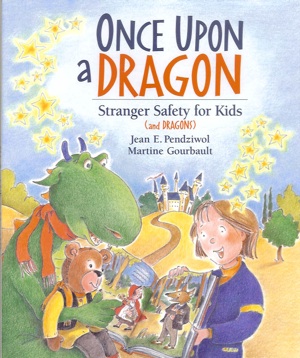SingaporeMotherhood | Preschooler & Up
April 2012
How Children can Learn about Stranger-danger

As parents, all of us want to protect our child against dangers of being kidnapped. Some of us have started teaching our child share about the perils by telling our child, “Don’t talk to strangers!”, however, does your child really understand the concept of stranger-danger? Here are some ways you can teach this concept with your child.
Use Picture Books
Appropriate picture books can explain the concept of stranger-danger in an easy-to-understand way to a child. These books take everyday situations and present them in a story form, which will be easy for parents to read aloud and discuss the various scenarios with their kids.
[banner][/banner]
If your child has started to speak and can understand concepts (usually after 2.5 to three years of age), start with picture books to illustrate the concept. These are the recommended titles. They are available from the National Library Board.
1. The Berenstain Bears Learn About Strangers by Stan and Jan Berenstain

About the book: When Papa Bear tells the cubs why they should never talk to strangers, Sister begins to view all strangers as evil until Mama brings some common sense to the problem. The Bears’ rules for safe conduct among strangers are listed on the last pages, including a rule about the privacy of a bear’s body. A good book to start awareness in young children, however as the book can be rather lengthy, it is better for kids three years old and above.
2. Never Talk To Strangers (Little Golden Books) by Irma Joyce and George Buckett

About the book: This book highlights situations that children will find themselves in — whether they are at home and the doorbell rings, playing in the park, or mailing a letter on their street, and tells them what to do if a stranger approaches. Colourful artwork and witty, lively rhyme clearly spell out a message about safety.
3. I Can Play It Safe by Alison Feigh and Laura Logan

About the book: This book that is written by an expert in child safety helps adults to reinforce seven important rules to personal safety in a non-threatening way. It is a great book that covers sensitive topics like safe versus harmful touches, safe versus unsafe secrets, and teaches a child to trust their instincts.
4. Once Upon A Dragon: Stranger Safety for Kids (and Dragons) by Jean E. Pendziwol and Martine Gourbault

About the book: A rhyming book about a little girl and her dragon friend who find themselves inside a fairy-tale book. Danger lurks in the form of strangers; including the hungry wolf from Little Red Riding Hood and Snow White’s evil stepmother. It is up to the girl to keep an eye on the dragon, and to teach her friend to be careful about strangers, especially when the dragon walks alone through deep dark woods and takes treats from people he doesn’t know.
Practical rules to teach your child:
1. Explain clearly to your child that a stranger is anyone who has not been introduced by you to your child. Once he or she is a responsible adult that a child knows (like a teacher, relative etc), the person is no longer a stranger.
2. Teach your child that she may only talk to a stranger when you/a caregiver is with him/her, or when you tell her it is okay.
3. Tell your child never to share personal details with a stranger, like where she lives or where she goes to school.
4. Teach your child never to go anywhere with a stranger (or for some instances, a relative or a friend), unless the caregiver or parents allow it. Also, parents and caregivers need to be know where the child is at all times.
5. Let her understand that you will never allow a stranger whom she doesn’t know to bring her to you. This is especially if your child is approached by a stranger or when the stranger says, “Come follow me, I will bring you to your mommy.”
6. Do not take anything – sweets / candies / gifts from a stranger.
7. Stay close to parents in a large space or in a crowded place, or within a visual range where parents can see him.
8. Teach your child to approach a staff behind an information counter or a policeman/security guard to call you if he does get lost. It will be helpful if the child knows your mobile number by memory.
Do try to practice these rules with your child through role-playing scenarios. Make sure that he/she understands that it is absolutely essential that he follows these rules. Keep your children safe by providing them with the necessary knowledge, only then you will be able to teach them how to be aware and alert to dangers in public places.
Mum to Kyle, Rachel Teo is the co-founder of www.myplayschool.net, an Early Childhood Educational site which helps moms to learn and play with their children, within and beyond the home environment.
All content from this article, including images, cannot be reproduced without credits or written permission from SingaporeMotherhood.
Follow us on Facebook, Instagram, and Telegram for the latest article and promotion updates.





